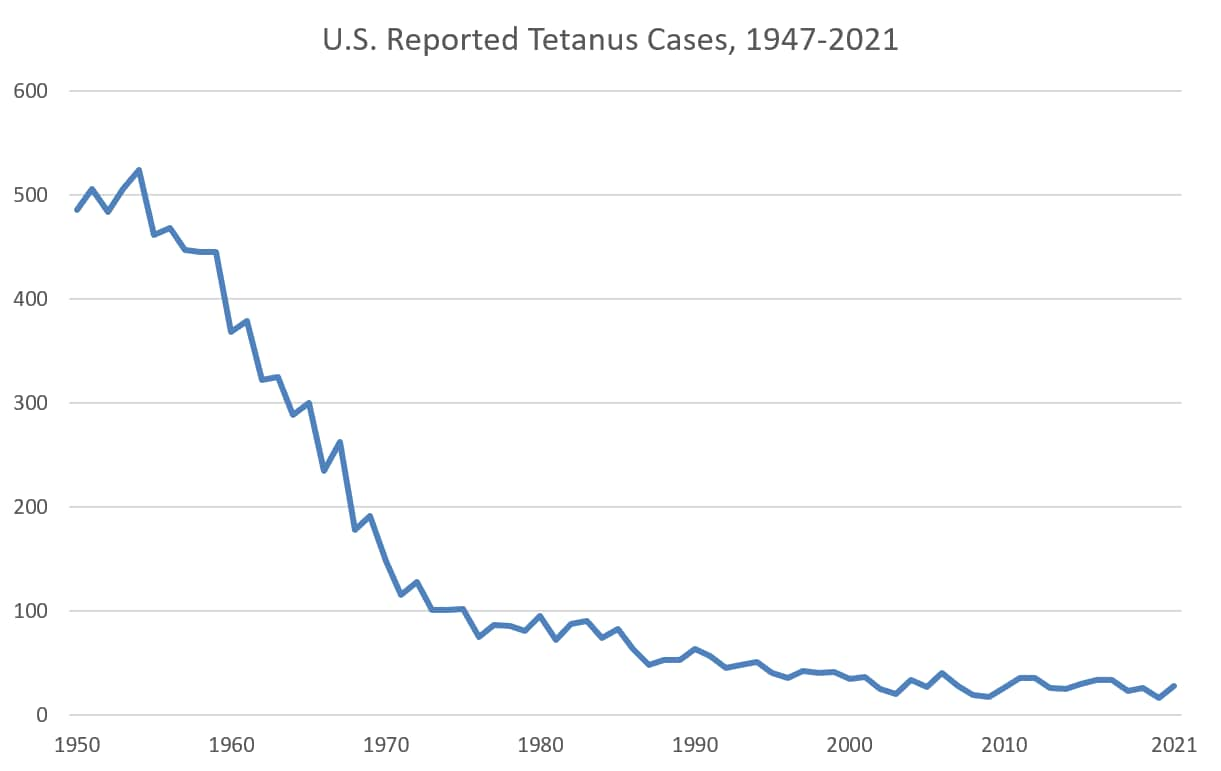Surveillance
Tetanus became nationally reportable in 1947. Health departments report cases of tetanus to the National Notifiable Diseases Surveillance System. Public health officials conduct tetanus surveillance to monitor trends in incidence and identify populations at increased risk.
Tetanus trends in the United States
Reported tetanus cases have declined more than 95% (see figure below), and deaths from tetanus have declined more than 99% in the United States since 1947.
These declines were in part because of continued use of tetanus antitoxin for wound management and introduction of tetanus vaccines in the 1930s and 1940s. Today, sporadic cases of tetanus continue to occur in adults who have not gotten all the recommended tetanus vaccinations. This includes people who have never received a tetanus vaccine or adults who haven’t stayed up to date on their 10-year booster shots.

Caption: The figure above shows reported tetanus cases in the United States during 1947–2021, according to the National Notifiable Disease Surveillance System. From 1947–2021, the number of tetanus cases reported each year, which already had decreased greatly since 1900, continued to decline, and remained low through 2021.